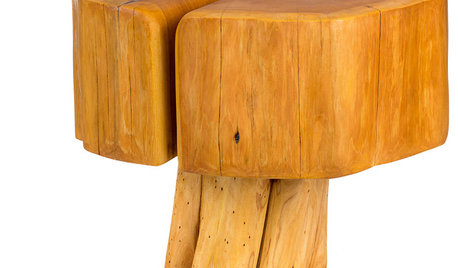I'm about to ditch this organic thing and go back to Trugreen
petewh
13 years ago
Related Stories

LANDSCAPE DESIGNDitch the Ordinary Ditch: Create a Realistic Dry Creek Bed
Here’s how to turn your water runoff system into an eye-catching accent for your landscape
Full Story
DECORATING GUIDESDitch the Rules but Keep Some Tools
Be fearless, but follow some basic decorating strategies to achieve the best results
Full Story
INSPIRING GARDENSInside Houzz: A Waterfront Property Ditches the Grass for a Garden
New drought-tolerant plantings and outdoor gathering spaces help this California backyard take in the view without wasting space or water
Full Story
LIFEThe Beautiful Thing About Dad's Chair
My father had his own spot in the house. His father had his own spot. Now I have mine
Full Story
FEEL-GOOD HOME10 Reasons to Ditch Perfectionism at Home
Scrap the orderly and the pristine and watch how vibrant and spirited your home can become
Full Story
LIVING ROOMSNew This Week: 3 Living Rooms That Ditch the Tech for Family
Quiet and serene, these spaces invite family and friends to congregate
Full Story
LIFE3 Ways to Get Unstuck — About Organizing, Decorating, Whatever
Break out of the do-nothing rut to accomplish your goals, whether at home or in other parts of your life
Full Story
PRODUCT PICKSGuest Picks: Beautiful Things You Can Feel Good About Buying
Upcycled, ecofriendly or just made responsibly, these home accessories and furniture pieces will keep your conscience clear
Full Story
WORKING WITH PROS10 Things Decorators Want You to Know About What They Do
They do more than pick pretty colors. Here's what decorators can do for you — and how you can help them
Full Story
FURNITUREHow to Buy a Quality Sofa That Will Last
Learn about foam versus feathers, seat depth, springs, fabric and more for a couch that will work for years to come
Full StorySponsored






Kimmsr
solc
Related Professionals
Horsham Landscape Architects & Landscape Designers · Burlington Landscape Contractors · Maple Valley Landscape Contractors · Alpharetta Landscape Contractors · Flagstaff Landscape Contractors · Oak Forest Landscape Contractors · Rosemount Landscape Contractors · Cincinnati Driveway Installation & Maintenance · Fallbrook Driveway Installation & Maintenance · Germantown Fence Contractors · La Grange Fence Contractors · Manorville Fence Contractors · Parkland Fence Contractors · Wauconda Fence Contractors · Angleton Fence Contractorsmessypotter